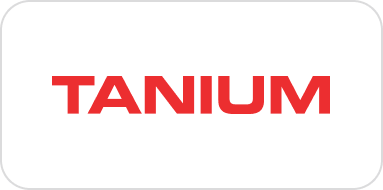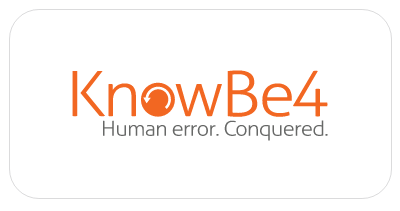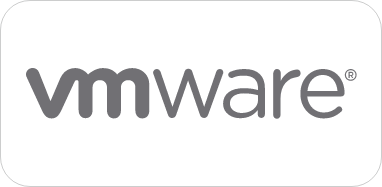Highlight Topics
- Exploring AI-Driven Malware Threats and Defense Strategies
- Mitigating Risks from Large Language Models (LLMs)
- Ethical and Regulatory Challenges of AI in Cybersecurity
- AI-Powered Threat Detection and Automated Incident Response

The 2025 ISMG Virtual AI Security Summit is the ultimate digital gathering for cybersecurity leaders and AI innovators, offering unique case studies into how artificial intelligence is transforming security strategies across diverse sectors. This global summit will feature actionable perspectives from top industry experts, exploring AI’s role in shaping the future of threat defense and identity protection.
Attendees will gain insights into how AI is not only being weaponized by cybercriminals but also driving innovations in identity verification, supply chain security, and the integration of advanced computing technologies to counter increasingly sophisticated threats. Sessions will explore real-world applications, tackle pressing ethical challenges, and offer a roadmap for navigating the complexities of AI-driven cybersecurity.
Gain the strategies and knowledge necessary to fortify your defenses and stay ahead of AI’s transformative impact on information security. Join us for unparalleled access to a global brain trust of thought leadership at the cutting edge of cybersecurity and machine learning.
ISMG Summits bring the foremost thought leaders and educators in the security space to the stage, interactive workshops and networking events. Learn from the “who’s who” in cybersecurity passionate about the latest tools and technology to defend against threats.
This session will explore how AI can be utilized to enhance organizational resilience, while addressing the associated challenges in threat detection, response, and human involvement.
Purk will discuss the evolution of AI-driven security measures to counter emerging cyber threats and consider the interplay between human factors and algorithmic precision. The discussion will offer practical insights into responsibly leveraging AI for sustainable digital security, addressing risks of automation and maintaining human trust.
Key Takeaways:
Mary Purk, Co-Founder and Former Director, AI at Wharton,
The Wharton School of Business
Brian Brackenborough, CISO, Channel 4
In this session, Dr. Anton Chuvakin of Google Cloud shares insights on:
Anton Chuvakin, Senior Staff Security Consultant, Office of the CISO,
Google Cloud Security
Track A
Despite the demonstrated value of AI, especially Generative AI, conveying its benefits to the board effectively remains a significant challenge.
This difficulty often starts even before the AI is implemented, with the need to upsell its potential value. Setting realistic expectations and choosing metrics and KPIs that align with business objectives are crucial for accurately measuring AI performance and impact. This session will delve into the key aspects of evaluating AI initiatives and effectively communicating their value to the board, ensuring clarity and persuasion.
Key Discussion Points:
Kush Sharma, Director Municipal Modernization & Partnerships, Municipal Information Systems Association, Ontario
Dr. Denise Turley, Executive Leader in AI
Sergio Trindade, CISO, Águas do Tejo Atlântico
Track B
For cybersecurity practitioners, the key challenge has been building effective processes to integrate AI into their cybersecurity operations and managing AI sprawl to ensure governance structures meet stringent AI security and privacy regulations.
The session will cover:
Wan Roshaimi Bin Wan Abdullah, Chief Technology Officer, CyberSecurity Malaysia
Track A
Patrick Bangert, VP and Chief of AI, Oxy
Noah Ringler, Artificial Intelligence Policy Lead, U.S. Department of Homeland Security
Rick Doten, VP, CISO, Information Security, Centene Corporation, Carolina Complete Health
Track B
While AI’s automation capabilities enhance efficiency and innovation, they also introduce significant challenges related to accountability, transparency and ethical considerations. In absence of proper AI governance, there is a heightened risk of privacy breaches, biased algorithms and the malicious exploitation of AI technologies.
The session will cover:
Charmaine R.A. Valmonte, CISO Aboitiz Equity Ventures Inc
Mario Demarillas, Board of Director, CISO and Head of IT Consulting & Software Engineering, Exceture Inc
David Siah, Vice President, South East Asia-Australia, Centre for Strategic Cyberspace & International Studies
Join Tim Morris for an engaging fireside chat on the transformative role of AI in modern security strategies. From AI-driven threats like deepfake phishing and adaptive malware to groundbreaking innovations in real-time visibility and continuous compliance, this session will explore how organizations can stay ahead in the battle between attackers and defenders.
The session will share insights into closing the external discovery gap, leveraging AI to move from reactionary incident response to proactive crisis management, and addressing ethical challenges like automation bias and AI governance. Walk away with actionable strategies to fortify your defenses, harness AI responsibly, and prepare for the future of cybersecurity. Whether you’re an IT leader, security professional, or innovator, this is a must-attend session to navigate AI’s transformative impact on information security.
Tim Morris, Chief Security Advisor, Americas, Tanium
Track A
Mike Manrod, CISO, Grand Canyon Education
Andres Andreu, Deputy CISO, Hearst
Phillip Davies, CISO, Equifax UK
Track B
Yet, despite widespread recognition of AI’s potential, many leaders struggle with implementation complexities. The feasibility of an AI-first approach depends on strategically integrating AI into core operations while addressing practical challenges – from driving measurable value and innovation to navigating organizational complexities. Leaders aiming to embrace AI at scale need actionable strategies for successful implementation.
The session will cover:
Shishir Kumar Singh, Group Head of Information Security Advance Intelligence Group
Vinay Simha, Principal Enterprise Architect – Enterprise and Data Architecture, Royal Philips
Matthias Yeo, Chief Executive Officer, CyberXCenter
Track A
Jayant Narayan, Head of AI Partnerships, Engagement & Strategy, United Nations Development Program
Pedro Tavares, Lead Data Scientist, Glencore
Track B
It is a sophisticated weapon that is difficult to detect because proliferation of AI tools that are weaponized to create fake voice, content and profiles.
This fireside chat will delve on the use of AI tools used to developed deepfakes, how we can detect and control and the role of both private and public sector to combat these ever evolving issue.
The session will discuss:
Mel Migriño, Southeast Asia Regional Director and Philippines Country Head, Gogolook
Track A
Jeremy Grant, Managing Director, Technology Business Strategy, Venable LLP
Dennis Gamiello, Executive Vice President, Global Head of Identity, Mastercard
Track B
Supply chains are growing longer, involving numerous partners, multiple regions and a wide array of products. While these networks offer benefits like cost reduction and global reach, they also introduce significant cybersecurity risks.
Any disruption in the supply chain can have cascading effects, resulting in financial losses, reputational damage, and, in extreme cases, threats to national security. As traditional security measures prove inadequate, organizations are turning to artificial intelligence and machine learning (ML) solutions, though the implementation path remains complex and sometimes unclear.
The session will cover:
Sudhir Tiku, Vice President and Head – Asia Pacific and China, Bosch
Abid Adam, Group Chief Risk & Compliance Officer, Axiata
Track A
Sergio Gago, Managing Director AI and Quantum, Moody’s Analytics
Eric Harris, Charlie Norwood VA Medical Center
Track B
Looking ahead to 2025, the use of AI in threat intelligence and automated response will undergo significant transformations, reshaping the tools, strategies and collaborative efforts aimed at combating advanced, AI-driven cyberattacks. Organizations need to adapt their security approaches to stay ahead of evolving threats while ensuring efficient and effective response mechanisms.
The session will cover:
Kunal Sehgal, Director, Virtual CISO, Security Decoded
Steven SIM Kok Leong, Chair, Advisory Committee, OT-ISAC
Todd Covert, CISO, National General, Allstate
Giles Douglas, Director of Engineering, Security, Privacy, and
Infrastructure, Grammarly
Arielle Baine, Chief of Cybersecurity, Region 3, U.S. Department of
Homeland Security
Mario Rivas, CISO, Seguros Monterrey New York Life
John Chan, Director of Technology – AI/ML, Raymond James
Aaron Hand, Chief AI Officer, Arcelor Mittal
#ISMGSummit
@ISMG_News











ISMG Summits offer Continuing Education Credits. Learn informative and engaging content created specifically for security professionals.